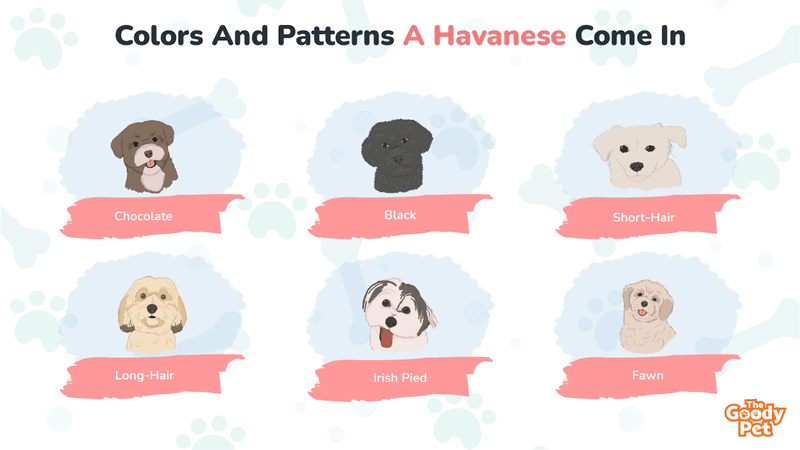The biggest claim to fame that Havanese dogs have is their christening as Cuba’s national dog breed. With their friendly temperament, fearlessness, and unwavering loyalty, it is not so hard to see why this dog is so deserving of the title. It also doesn’t hurt that they are so adorable.
Speaking of adorable, Havanese dogs’ looks have definitely played a huge role in boosting the dog breed’s popularity beyond the borders of its native home. The best part is that Havanese dogs come in 27 different colors and patterns.
Let’s take a deep dive into these variations including super rare types like the parti belton or the blue Havanese.
27. Merle
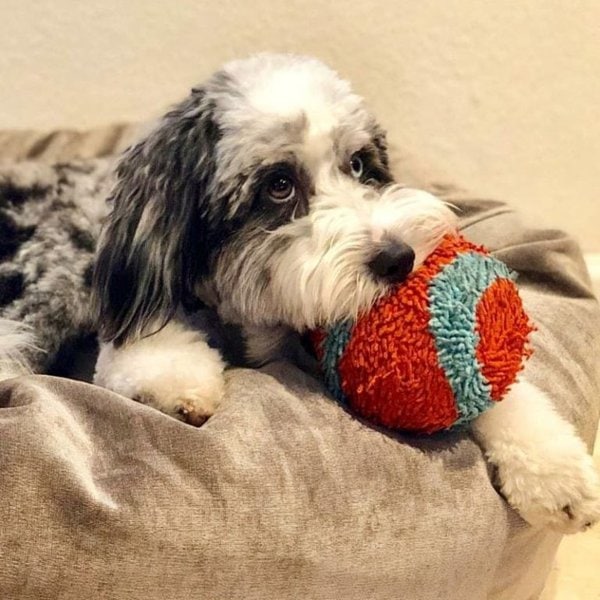
Merle Havanese dogs have dark, irregular, and mottled markings all over their body. The markings are usually black but may also be red or brown. The rest of the body usually has a white, gray, silver, or off-white coat.
The eyes of Merle Havanese dogs are also unique in that they are sometimes blue in color.
Merle Havanese dogs are beautiful but the genes responsible for their uniqueness are quite problematic.
The merle mutation is associated with eye and ear problems with some merle Havanese dogs suffering either blindness, deafness or both. These conditions are more common with double merle Havanese dogs.
26. Brindle
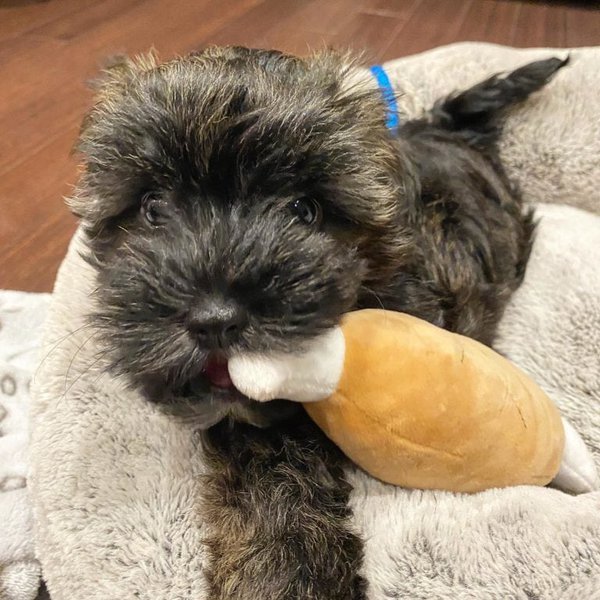
Brindle Havanese dogs have dark striped markings on lighter brown base coats. The stripes are frankly difficult to appreciate with the Havanese dog’s long coat. However, you can very easily see them if the dog is trimmed to a shorter coat or naturally has short fur.
Brindle Havanese dogs are quite rare. This is because the Brindle gene in dogs is not very common. The genes also thankfully do not carry any specific health consequences for the Havanese pooch.
25. Black
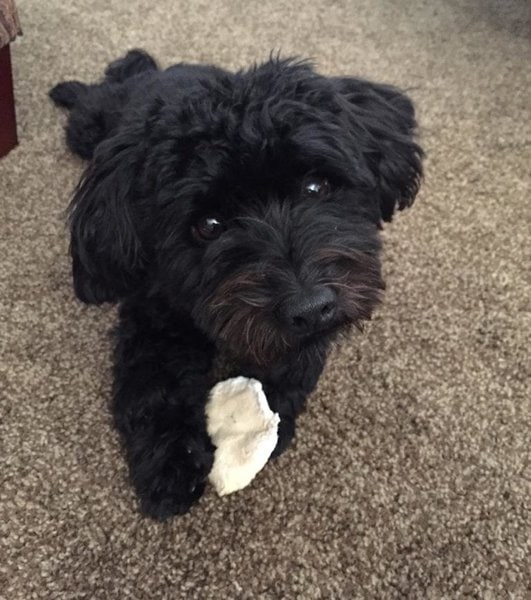
Black Havanese dogs have all black fur from head to toe and tail. Strictly speaking, the black Havanese should not have markings in any other color anywhere on their body otherwise they belong to another color combination variation.
The interesting thing about black Havanese dogs is that they don’t change color even as they grow older unlike most other Havanese dog variations. This makes them a nice option if you don’t want surprises later on in the dog’s life.
24. Black & Silver
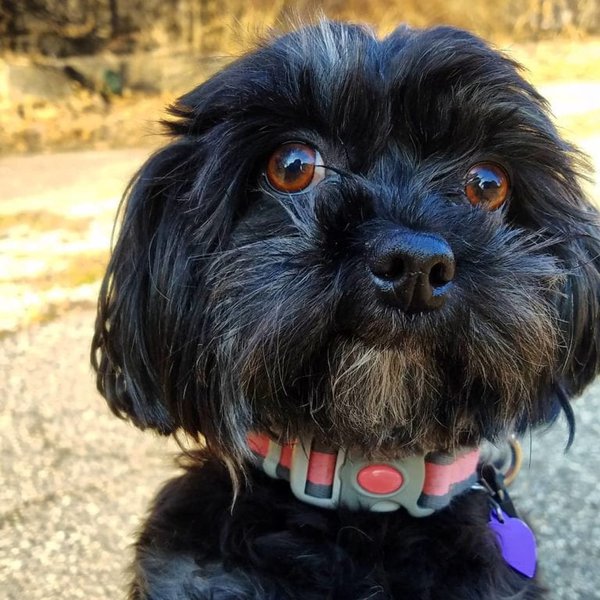
Black and silver is one of the most eclectic color combinations in the Havanese dog breed. This makes it a bit difficult to accurately group all black and silver Havanese doggies into one aesthetic architype.
For the most part, black and silver Havanese dogs have a mainly black coat with silver markings usually on the face and paws. In other cases, the black and silver fur appear mixed all over the body for a dark, ashy aesthetic.
23. Black & Tan
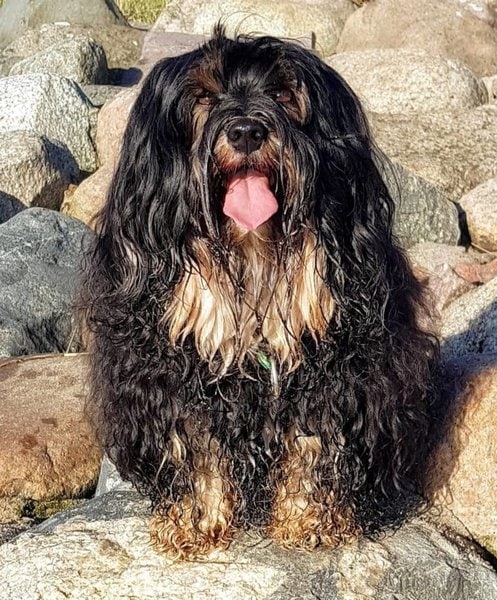
Black and tan Havanese dogs are quite rare which is a shame considering how unique and beautiful their coats are. Black is the predominant color in this case and appears on most parts of the head, torso, limbs, and in most cases, the entire tail.
The tan markings on the other hand are limited mainly to the face on the muzzle and over the eyes. The tan fur may also appear on the neck, fore-chest, and paws.
Black and tan Havanese dogs are proof that it is not only big dog breeds like German Shepherds or Doberman Pinschers that can pull off the black and tan combination.
22. Chocolate
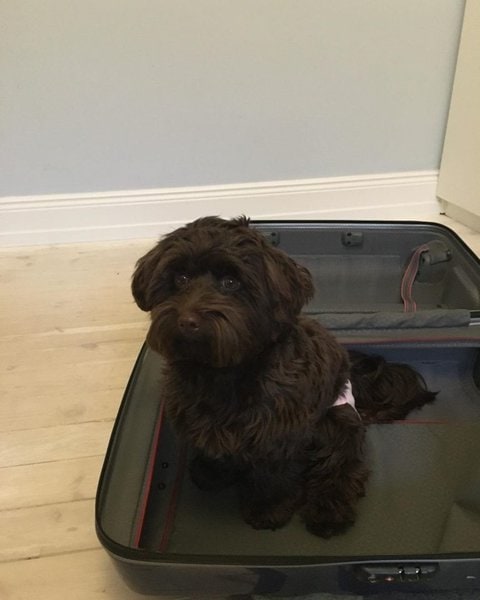
Chocolate Havanese dogs have a very dark shade of brown coat. The fur is all chocolate brown and should not have any black, tan, or white markings.
However, you may notice that the fur on the face and other surfaces like the chest, belly and paws is sometimes lighter than the rest of the chocolate Havanese dog’s body. These changes start when the Havanese is a puppy and the dog should have settled into their final shade of chocolate brown by 2 years of age.
21. Chocolate & White
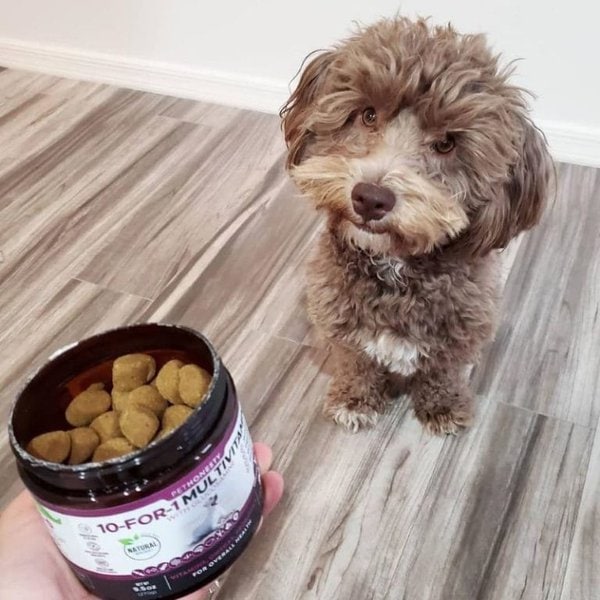
Traditionally speaking, chocolate and white Havanese dogs have the typical white marking distribution. Here, the majority of the coat is dark, chocolate brown in color. White fur occurs as markings on the face, chest, neck, and paws.
However, with some marking variations of the Havanese, the white fur may extend as patches interrupting the chocolate parts of the coat.
Whatever pattern they have, chocolate Havanese doggies are easily among the most popular variations of the breed.
20. Tan & White
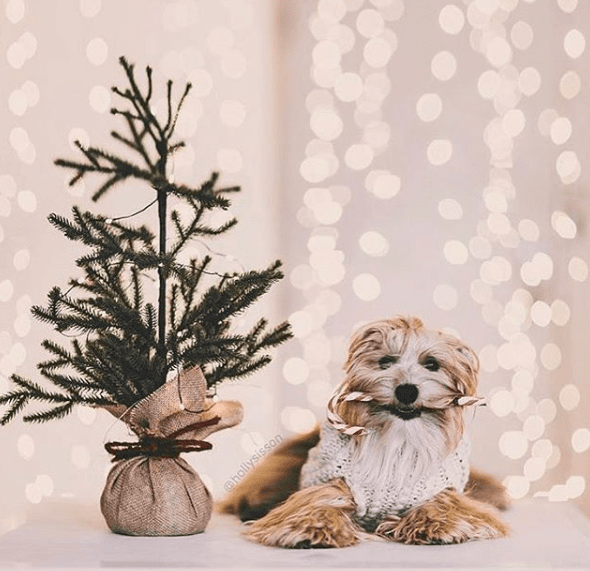
Tan and white Havanese dogs are quite rare. Unlike most other bicolor variations in this dog breed, the white fur covers most of the coat.
The tan fur on the other hand exists as markings mainly on the face and as either small or expansive patches on the chest, belly, and limbs. The particular shade of brown varies from a solid and intense tan shade in some Havanese dogs to an almost golden yellow shade in others.
19. Cream
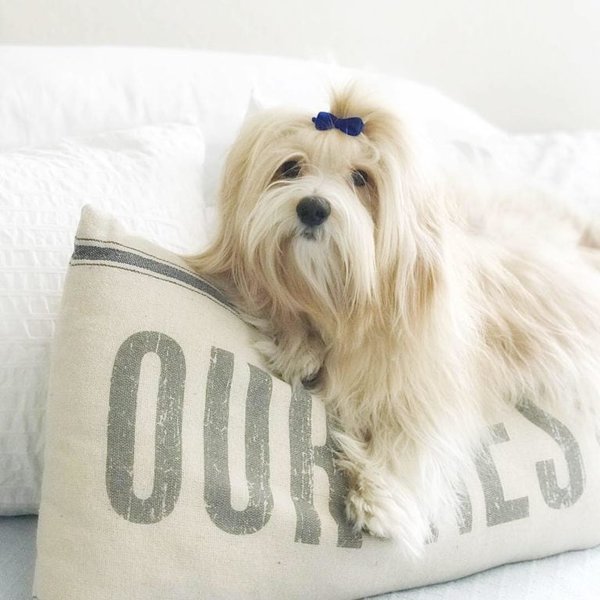
Cream Havanese dogs are a variation of brown Havanese which comes as a surprise to many. At first glance, you may think you are just looking at a particularly undergroomed white Havanese doggy.
However, on closer inspection you will realize that the fur is uniformly cream and quite clean for that matter.
Cream Havanese dogs range in shade from golden yellow to paler cream and off-white tones. The color intensity changes as the dog grows older.
18. Fawn
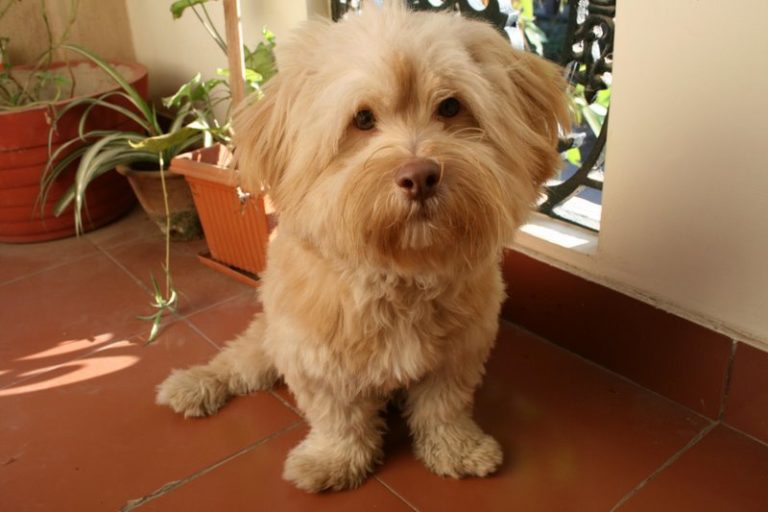
Fawn Havanese dogs are just as lively as they look. They have a beige shade of brown fur which works perfectly with the long, wavy coat to produce a very beautiful, little dog.
While in many other dog breeds fawn coats appear pale and diluted, the coat on a fawn Havanese can sometimes appear solid and very intense. However, it appears a bit duller and more watered down in other fawn Havanese doggies.
17. Gold
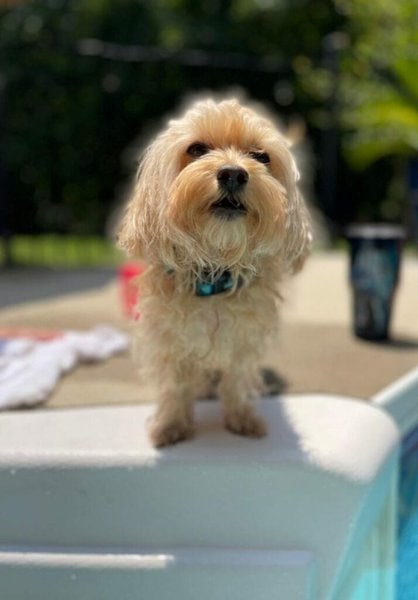
To be fair, it is very difficult in a lot of cases to differentiate between gold Havanese dogs and other breed variations like tan or fawn Havanese dogs.
The best way to distinguish gold Havanese dogs from the rest is with the richer yellow undertones that their coats have. These complement the smooth coat perfectly giving the dog a bit of a shinier appearance than the other two light brown shade varieties of the Havanese dog.
16. Red
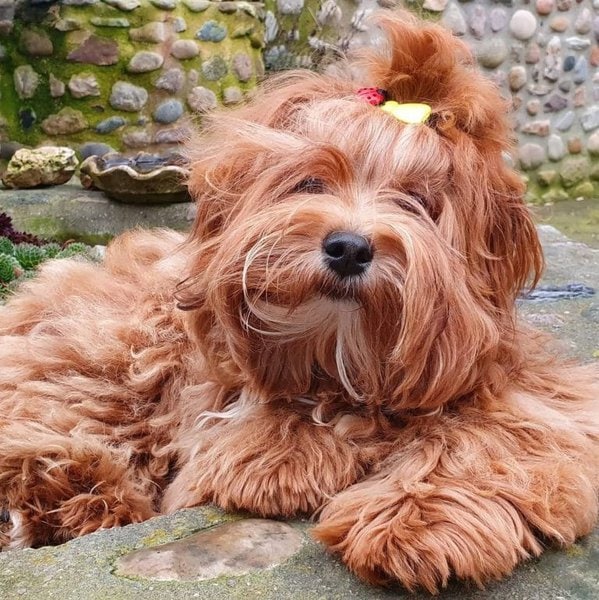
Red Havanese dogs have a reddish shade of brown which covers the entire dog’s body. In some cases, the red is very intense and gives the Havanese a rusty quality. In others, the shade of red is a bit lighter which has an earthy reddish-brown effect.
Red is one of the common Havanese standard coat color variations recognized in most dog shows. It is also slowly gaining popularity as one of the most desirable variations of the Havanese dog breeds.
15. Red & White
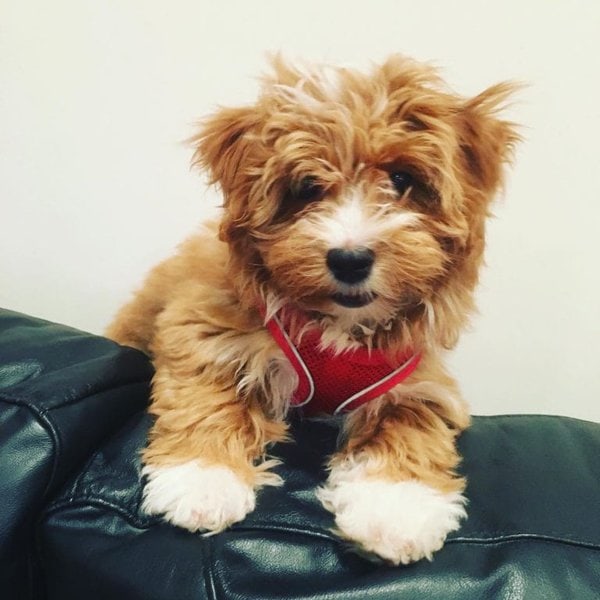
Red and white Havanese are simply a variation of the wildly popular red Havanese where the red coat is interrupted by white markings.
In some red and white Havanese doggies, the markings are regular and predictable. In these cases, you may find these markings on the face, neck, paws, and chest area. In others, the markings are irregular and randomly dispersed.
Very rarely, the coat on a red and white Havanese will have white as the main color with reddish-brown markings.
14. Silver & White
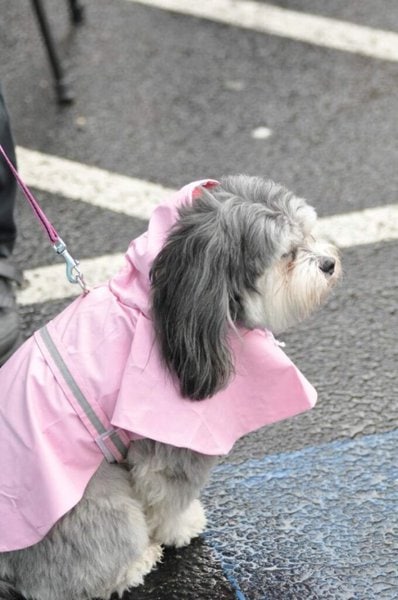
Silver and white Havanese dogs have a very interesting distribution of colors on their coat. The majority of the coat is a silver-gray color. This part of the coat may also have some white fur which gives the dog a salt-and-pepper aesthetic that is very endearing.
In some cases, there is an almost even split in coverage between the white and silver parts of the coat on the Havanese. Here, the white fur covers large patches of the coat on the face, chest, neck, and limbs.
13. White
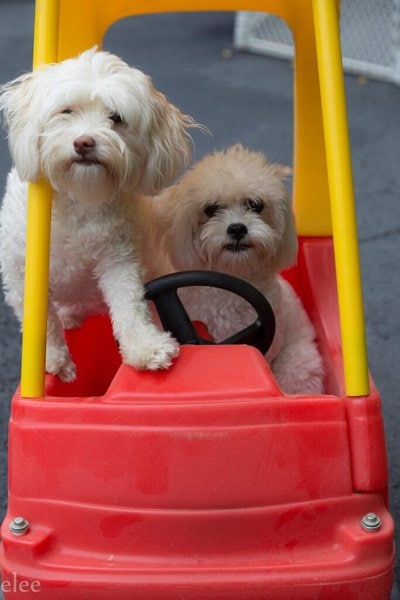
Full body white Havanese dogs are arguably the most popular and recognizable variation in the Havanese dog breed. They are among the very first to be widely bred both in Cuba and other parts of the world where the Havanese breed has become popular.
The fur on these angelic beauties is usually all white. However, it is possible to have a white Havanese with a few small patches of tan or even red fur mainly on the muzzle or paws.
12. Blue
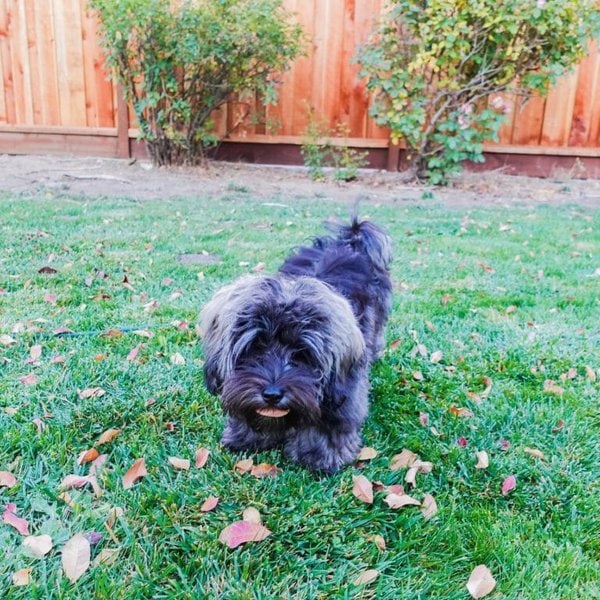
Blue is probably the rarest color when it comes to Havanese dog breed color variations. It occurs as a result of watering down of black genes by the presence of dilution genes.
The appearance of a blue Havanese is very difficult to pin down as they change quite a lot throughout their lives. For the most part, the coat will have a pale, watered down black appearance.
When the puppies are young, the coat may appear silver. As they grow older, the shade changes to a more blue-gray tone.
11. Full Body
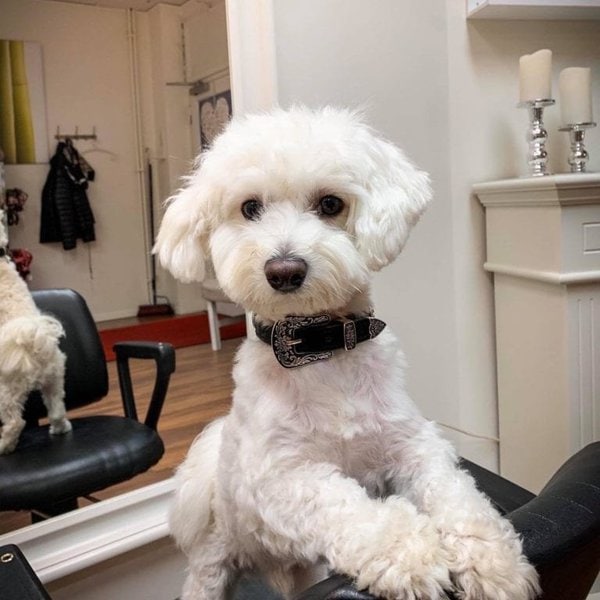
A full body Havanese is one where the entire coat is only one color. There should be no markings in any other color even if it is small patches on the beard fur or paws.
The most common single full body colors on a Havanese include white, black, chocolate, red, and blue.
While markings are not allowed with this pattern variation, the shade of the single color may be different throughout the Havanese dog’s coat.
10. Silver Markings
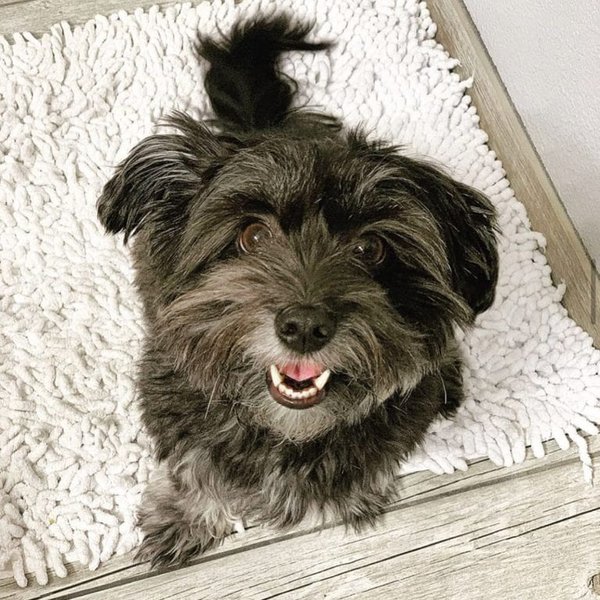
Silver markings on a Havanese dog are often missed even by professionals. They are often confused for white markings due to their bright and shiny appearance.
However, if you look closely and with good light, you will notice that silver markings on Havanese dogs are closer to gray in shade and intensity than they are to white.
Another important feature of silver markings on Havanese dogs is that they usually cover a very small area mainly on the face, neck, and paws.
9. Cream Markings
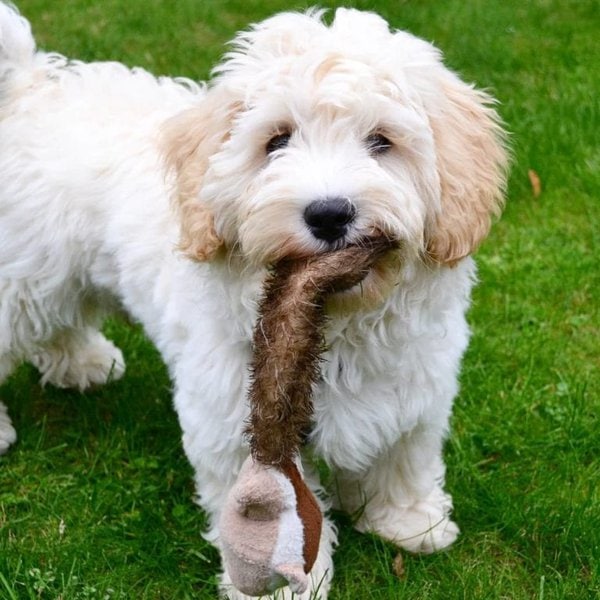
Cream markings on Havanese dogs often occur on white Havanese varieties. They cover a very small area. This is usually limited to patches on the face, the tips of the ears, the neck, or the paws.
Cream markings vary in shade from one Havanese doggy to the next. In some, the cream appears darker and almost like a shade of tan. In others, it may appear like a pale yellowish-white shade of cream.
8. Tan Markings
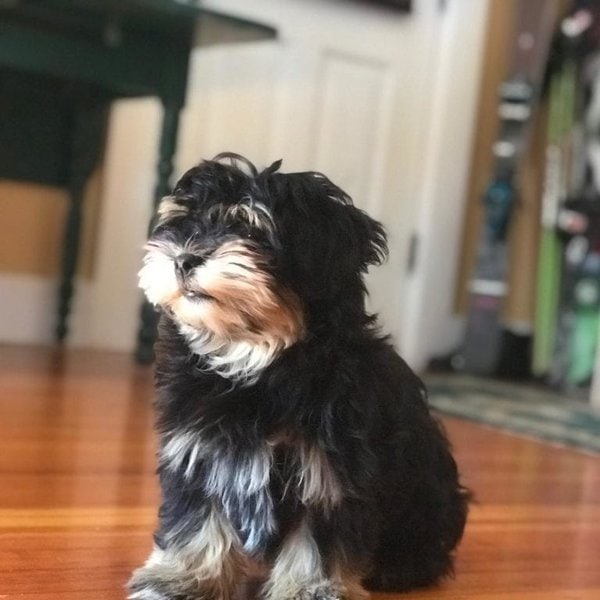
Tan markings are another marking variation on Havanese dogs that typically cover a very small area. In this case, they have a bit more predictability in their appearance and distribution. The tan markings are usually on the face with a very distinct mask.
This includes tan fur on the muzzle and a small tan patch over each eye. The tan fur may also be found in small patches on the neck or on the paw.
7. White Markings
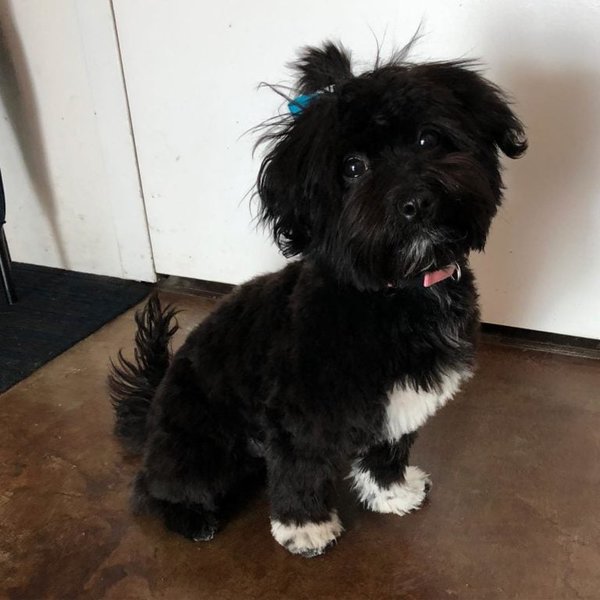
White markings on a Havanese tend to have a bit more of a strong presence to them and cover more area than cream or tan markings. The white markings typically appear on lower or forward facing surfaces of the Havanese dog’s body.
These surfaces include the neck and the chest. In some Havanese dogs, the white markings may also be found on the face or paws.
Wherever they appear, the distinguishing character of white markings on Havanese dogs is that they cover a minority of the coat.
6. Parti-Color
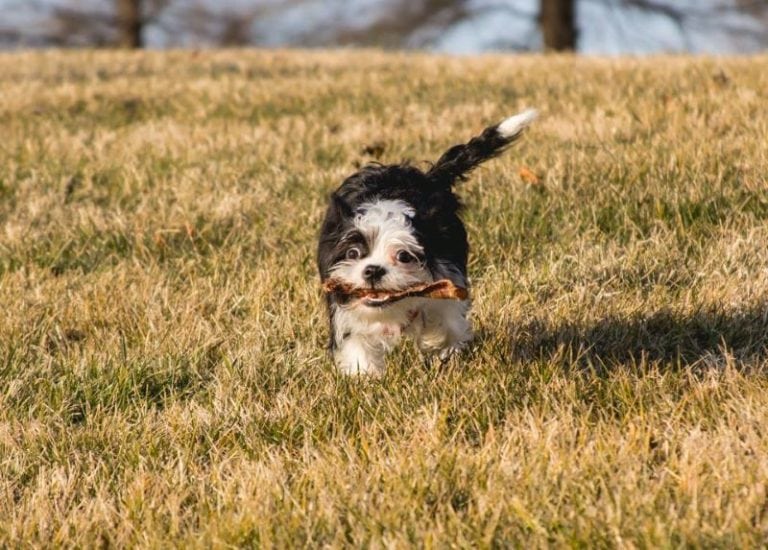
Parti-color Havanese doggies are often confused for ones with white markings. The difference between the two is in the extent of the coat covered by white fur. With parti-color Havanese dogs, the white fur covers less than 50% of the coat.
However, the coverage with a parti-color Havanese is way more than that on a Havanese with simple white markings.
There is also a bit more irregularity with the distribution of the white markings on a parti-color Havanese than one with white markings.
5. Irish Pied
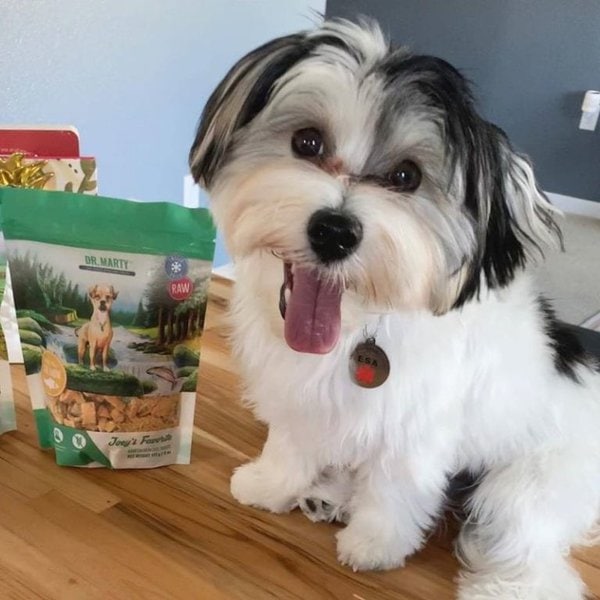
Another commonly miscategorized marking variation with the Havanese dog breed is the Irish Pied kind. With these Havanese pooches, the white part of the coat is the majority and covers more than 50% of the body.
With this description, the white fur on an Irish Pied Havanese is more of a main coat than markings.
With Irish Pied Havanese dogs, the distribution of the white fur is unpredictable as with the parti-color variety.
4. Parti Belton
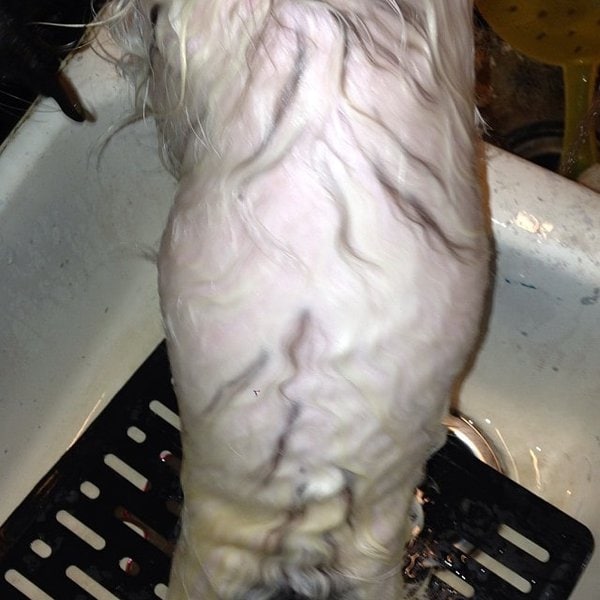
The Parti Belton marking variation of Havanese dogs is sometimes difficult to pick out. It is characterized by the presence of spots of hair with a different color within patches of a specific color.
The spots are usually colors like black or shades of brown on white fur. The appearance on white fur gives this trait the parti part of the name.
Due to the long nature of the Havanese dog’s coat, the spots become isolated strands of the different colored patch within the tuft of white fur.
3. Sable
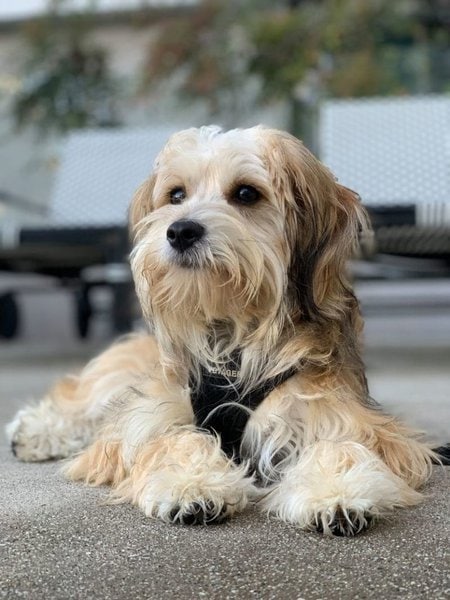
Sable Havanese dogs have dark tip markings on lighter fur. The tips are more often than not a shade like black and appear on any lighter color of fur from tan and gold to white.
The sable markings do not always appear uniformly over the entire coat. In some Havanese dogs, the sable tip markings may spare some parts of the coat. However, this sparing may not be true sparing as in the case of trimming where the dark ends are cut off during grooming.
2. Long-Haired
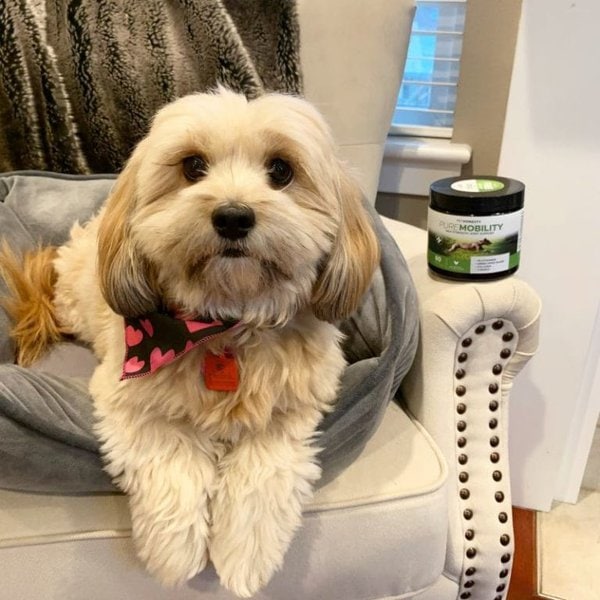
Havanese dogs typically have long, soft, and slightly wavy coats. The coat may look densely packed but the fur is actually very lightweight.
The long fur on a Havanese dog grows pretty much uniformly which is why they often need to get groomed especially around the face and paws.
Speaking of grooming, one of the best things about a long-haired Havanese dog is that they are hypoallergenic and shed very minimally. Short-haired Havanese dogs offer neither of these perks.
1. Short-Haired
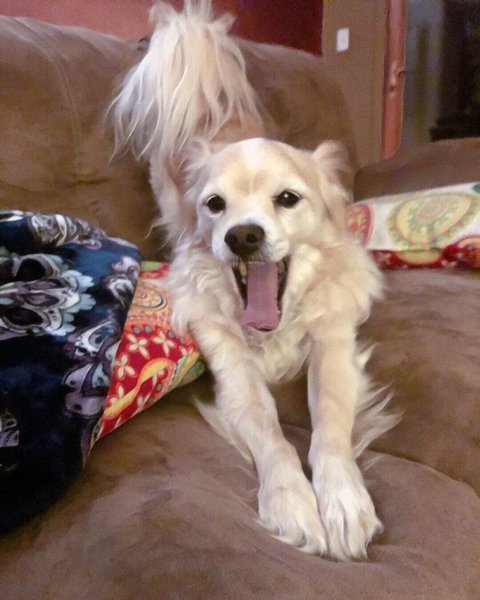
Short haired Havanese dogs are the rarest of the two coat types based on coat length. The fur is short and close to the skin on most parts of the dog’s body. However, there may still be long withers on the ears and tail.
The gene responsible for coding for short hair in Havanese dogs is a recessive one. This is why the breed is not such a common occurrence. However, it is otherwise unproblematic with short-haired Havanese dogs being just as healthy as their longer haired counterparts.
Related Questions
Why Do Havanese Change Colors? Havanese dogs change color due to genetics. Not all of them have the required genes for this and thus not all Havanese dogs change color. Havanese dogs may also change color as a result of old age. The intensity of the shades reduces. In some cases, the dog may also start to develop gray fur.
At What Age Do Havanese Stop Changing Color? Havanese dogs experience coat quality and color changes during the first year of life. This may extend to 18 months or even two years in some Havanese pups. The change is more intense and pronounced in some Havanese puppies and more subtle in others especially when it comes to color transitions.
Most Desirable Havanese Colors: The most desirable Havanese dog color is, without a doubt, full body white. This is the most traditional and easily recognizable aesthetic for any dog breed. However, as niche demand for unique colors increases, variations like blue or even red are becoming just as desirable and popular as white.

